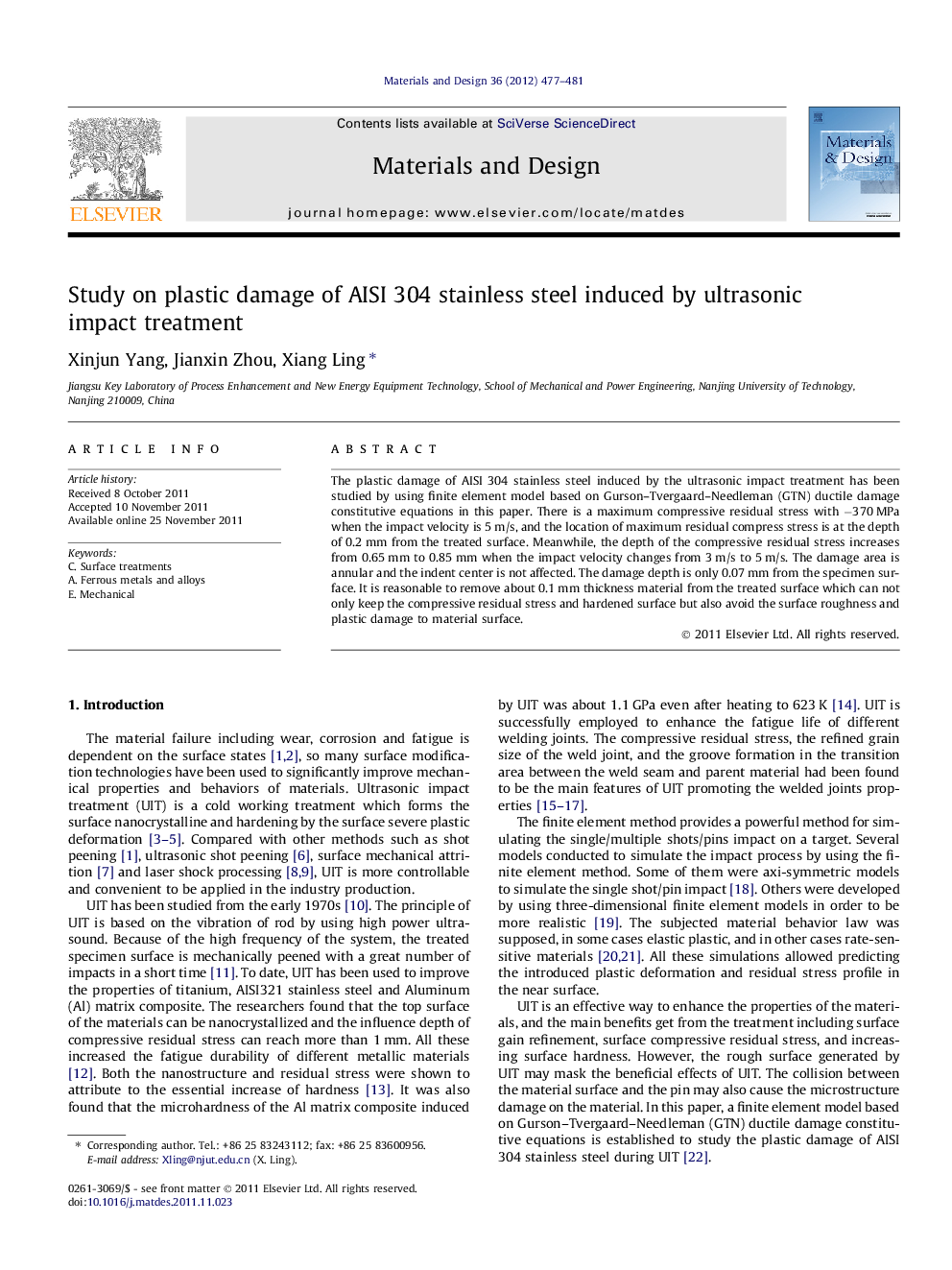| Article ID | Journal | Published Year | Pages | File Type |
|---|---|---|---|---|
| 830869 | Materials & Design (1980-2015) | 2012 | 5 Pages |
The plastic damage of AISI 304 stainless steel induced by the ultrasonic impact treatment has been studied by using finite element model based on Gurson–Tvergaard–Needleman (GTN) ductile damage constitutive equations in this paper. There is a maximum compressive residual stress with −370 MPa when the impact velocity is 5 m/s, and the location of maximum residual compress stress is at the depth of 0.2 mm from the treated surface. Meanwhile, the depth of the compressive residual stress increases from 0.65 mm to 0.85 mm when the impact velocity changes from 3 m/s to 5 m/s. The damage area is annular and the indent center is not affected. The damage depth is only 0.07 mm from the specimen surface. It is reasonable to remove about 0.1 mm thickness material from the treated surface which can not only keep the compressive residual stress and hardened surface but also avoid the surface roughness and plastic damage to material surface.
► FEM coupled GNT damage model was developed. ► FEM was used to study the plastic damage of steel induced by UIT. ► The damage area was annular and only 0.07 mm from surface after UIT. ► Remove 0.1 mm surface after UIT could enhance the properties of materials.
